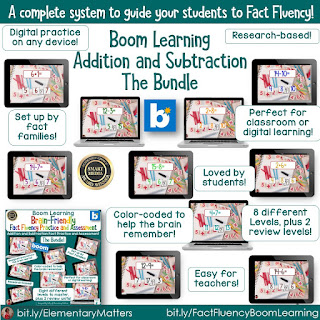My students read "out soft" for many reasons in the classroom.
First of all, I'll bet you've already figured out the meaning of "out soft." Although I made up the term, the students understand what it means right away. I'll introduce this idea at the very beginning of the school year, and make sure the students know that reading "out soft" means the children are able to hear their own voice as they reads, but wouldn't disturb the person sitting next to them. An adult might call this "barely audible." As you might have guessed, it's the opposite of "out loud," which requires volume and projection. You might call it whispering, but the term "out soft" is just more fun!
We practice. Some children, by nature, struggle with turning down the volume and turning off the projection, but they do get it.Once they get it, they are empowered!
1. Understanding directions.
This little trick has helped many little ones. Plus, it has helped me as well! Sometimes directions are hard to understand, but I've found that when reading those same directions loud enough to hear yourself, they can make a whole lot more sense! Seriously, how many times has a child come to you confused about written directions... then you ask the child to read the directions to you, and suddenly they'll say, "Oh, I get it!" Works like a charm!
I always start reading groups with a warm up. The children are trained to arrive at the reading table, choose one of their books, and start reading "out soft." This not only prevents down time while waiting for the stragglers, but it gives me a chance to listen in and do some assessing. Sometimes I'll give them something specific to warm up with.
Studies show reading words in phrases increases fluency, so I often have the children warm up with these phrases:
Fry Sight Word Phrases One little hint: be sure the sight words are easy for the children so they can build the fluency when practicing them as phrases.
3. Aid Concentration
As you know, many children struggle to concentrate on independent reading. They are distracted by just about anything, including their own thoughts. I find having these children read "out soft" really helps them pay attention to their reading!
4. Reading with a partner.
Reading with a peer is a wonderful strategy that should be used frequently in the classroom. Think about it, 50% of the children are all practicing their reading skills, while the other 50% are listening and guiding the readers. It's a win-win! Plus, the children love it! But when all the children are interacting at once, they'll need to be reading "out soft!"
5. It helps the memory.
When children hear themselves, it helps the memory. This works with word reading (see #2) as well as important science facts, and even math facts! When I use these practice cards with my students, I encourage lots of repetition, but I also encourage the children to say the entire fact "out soft."
Fact Fluency Practice Cards
How else can children learn by reading "out soft?"





















